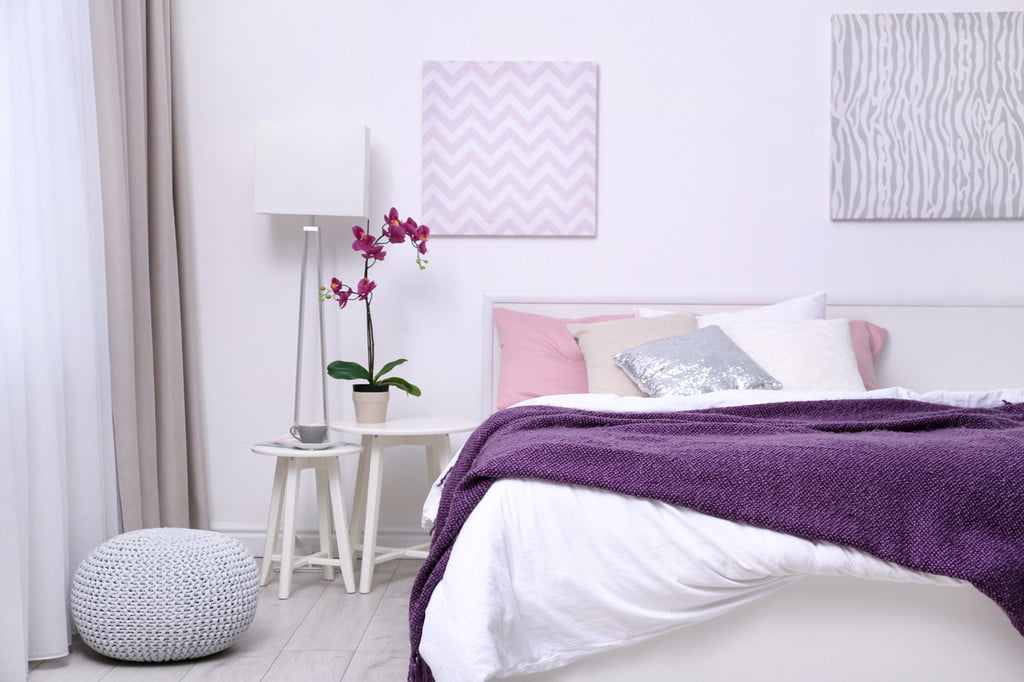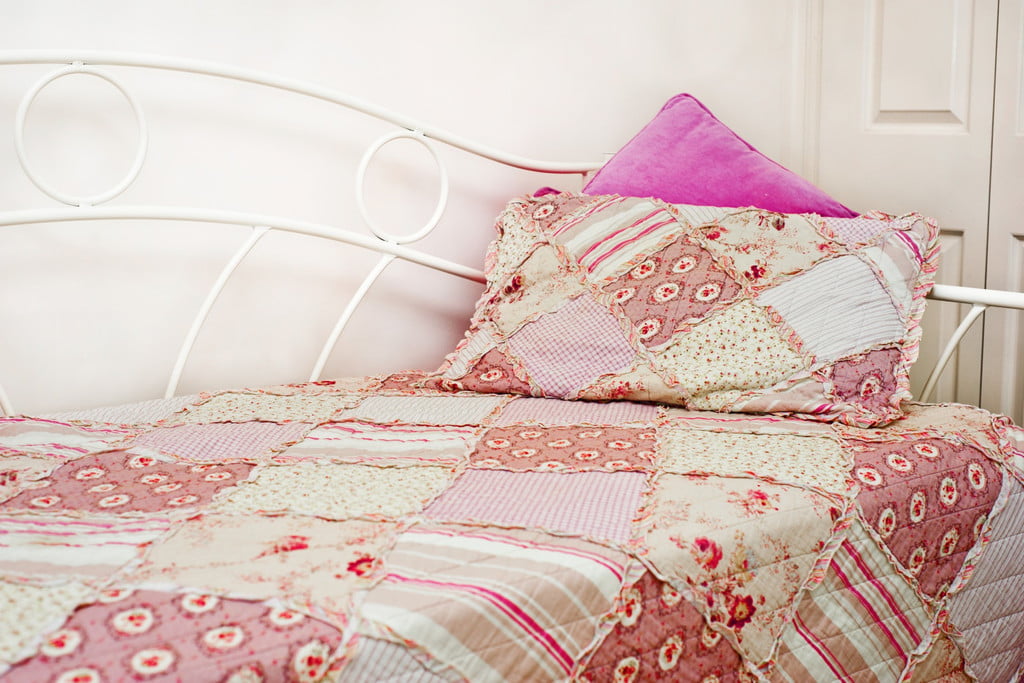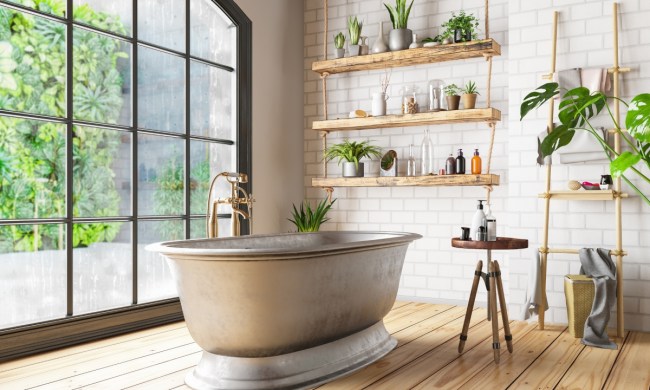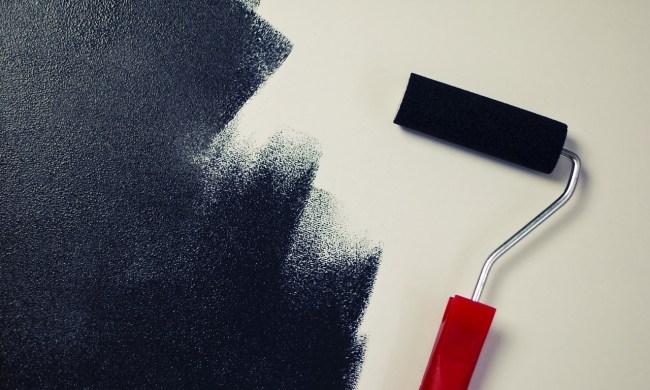Every person has their own way of making their bed. Whether it’s piled up with pillows or simply tucked with a duvet cover, there is no wrong way to do it. So, when it comes to blankets, there are a lot of options to consider. With the most common types being a bedspread or quilt, you may not have heard of the term coverlet. Thanks to its extra layer of warmth, however, it may be the addition that your bed is missing.
What is a coverlet?

With the design originating in the late 19th century, the coverlet was frequently used during the Colonial era as a source of warmth. Although originally made with wool yarn, a modern day coverlet can be found in a variety of fabric types like linen or cotton.
The idea behind a coverlet is to provide warmth with a lightweight blanket. Unlike quilts or bedspreads, coverlets act as an addition rather than the main attraction. Made with lightweight fabric and a smaller design, coverlets are often sandwiched between the sheets and the duvet or folded up at the end of the bed.
Although they were created centuries ago, a coverlet can actually add quite the modern touch to your bed. When folded carefully and placed at the end of the bed, the coverlet acts as a decorative feature and as a way to stay warm without messing up the perfectly made sheets. You can find coverlets in a variety of beautiful designs, colors, and materials, allowing you to match it seamlessly with your existing set of sheets and bedspreads.
What is a quilt/bedspread?

Unlike a coverlet, a quilt or bedspread is what covers the bed. It is the main blanket that you get under when it’s time for bed. You can think of bedspreads or quilts as a more permanent fixture. They typically hang over the edges of the bed, covering it entirely. Bedspreads can be found in a variety of colors, patterns, and materials, and are typically made with heavier fabrics. The term bedspread also encompasses a few types such as:
- Quilt
- Duvet
- Comforter
What’s the difference?
When it comes to differentiating between a bedspread and a coverlet, there are a few defining characteristics that set them apart. The importance of understanding the difference can come into play when you are trying to find the best sets for your own bed:
- A coverlet is made with lightweight material and is smaller in size, usually only reaching the edges of the bed. A bedspread is made with thicker, heavier materials that reach well over the edge of the bed with ample overhang.
- A coverlet is typically folded up and left on the end of the bed for both decoration and quick comfort. A bedspread rests over the entire bed, covering it completely for permanent comfort.
When is a coverlet the better choice?
All in all, there is no wrong time for a coverlet. Available in a bunch of lightweight options, a coverlet can be the perfect addition to any existing bedspread. You can find the right mix of colors and patterns to pair with your existing bed setup or buy all news ones for a completely different design.
When using a coverlet, it works best as a folded addition to the end of the bed or on a nearby couch or chair. It can be a quick fix for sudden chills in the middle of the day or a quick power nap. When choosing a coverlet for your room, consider some of the most common material types for the ideal comfort:
- Cotton
- Linen
- Velvet
- Silk
Coverlets allow you to create depth and design through layering. You can layer a coverlet between your sheets and bedspread or lay it right on top for contrast. There is really no wrong way to use a coverlet. They make great additions to existing bedding. Since they are available in all kinds of materials, textures, patterns, and colors, you’ll have no problem finding the perfect coverlet you love for your bedroom design.



